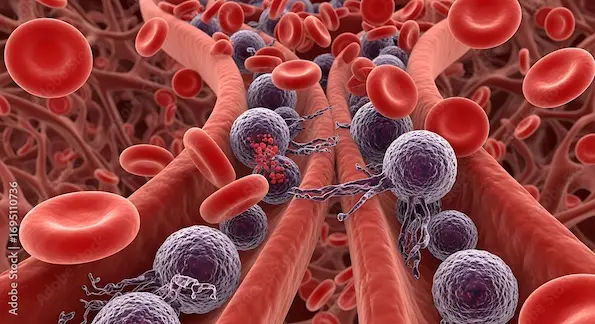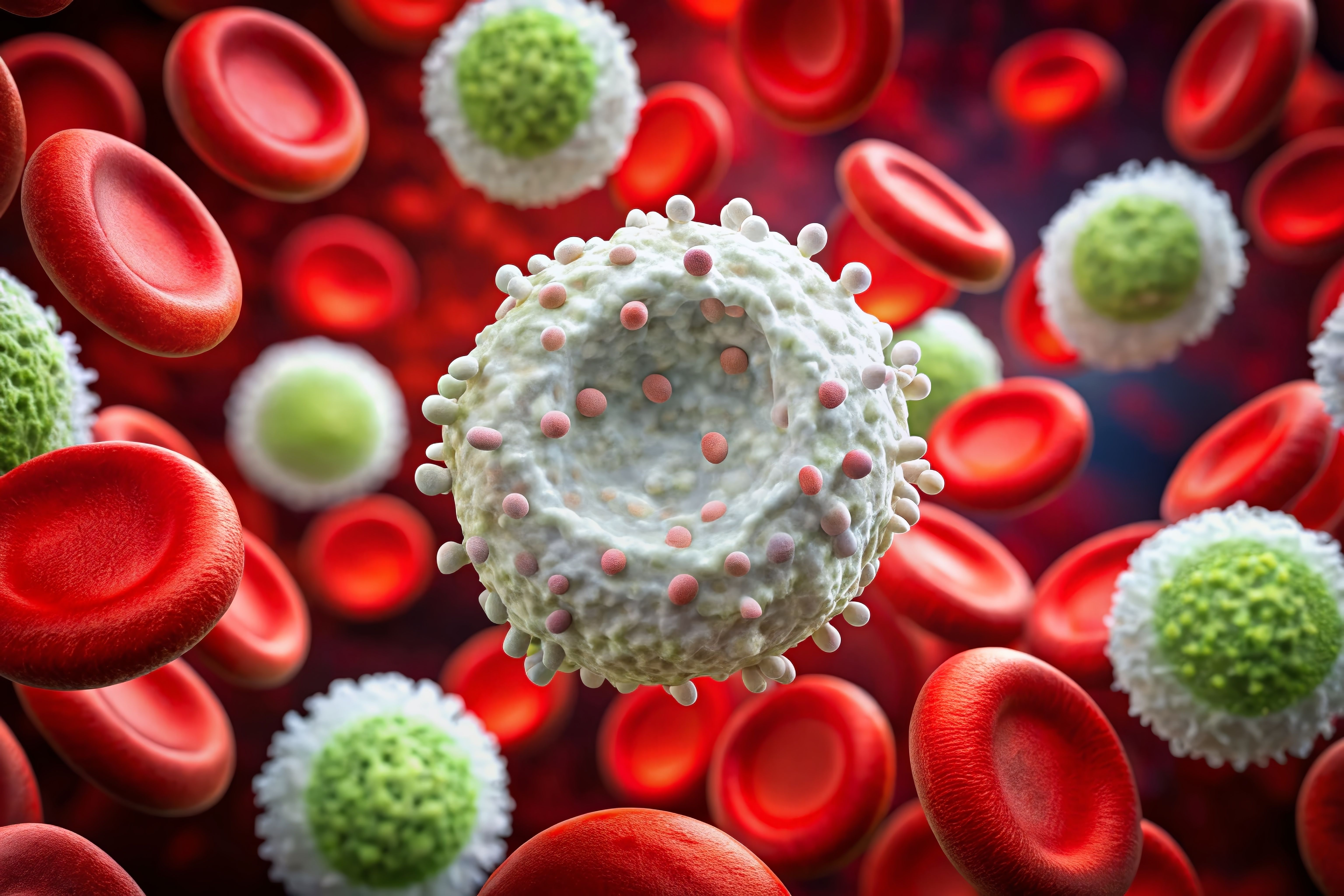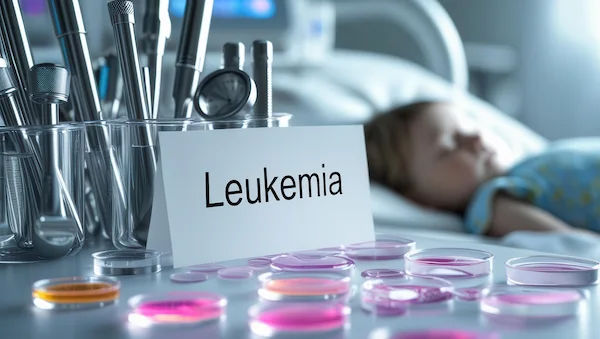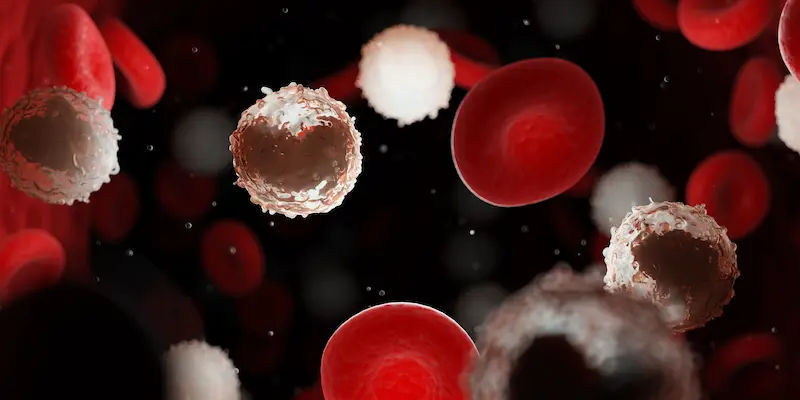Understanding Leukaemia: A Comprehensive Guide to Diagnosis and Treatment Paths
Learn about leukaemia, including its types, symptoms, diagnosis, and modern treatment options such as chemotherapy, targeted therapy, immunotherapy, and stem cell transplants.

.webp?tr=q-80,f-webp,w-350,dpr-2,c-at_max 700w)
Introduciton
Receiving a potential leukaemia diagnosis can be an overwhelming and frightening experience. The medical terminology can feel like a foreign language, and the path ahead uncertain. This guide is designed to demystify that journey. We will walk you through what leukaemia is, how it is diagnosed, and the array of modern treatment options available today. Think of this as your roadmap, transforming complex information into clear, actionable knowledge. Our goal is to empower you or your loved one to have informed conversations with healthcare professionals and approach the situation with clarity and hope. From the first suspicious symptoms to the intricacies of targeted therapy, we cover the essential aspects of this blood cancer, emphasising that a leukaemia diagnosis is the beginning of a carefully managed treatment pathway, not an end.
What Exactly is Leukaemia?
At its core, leukaemia is a cancer of the body's blood-forming tissues, primarily the bone marrow and the lymphatic system. To understand it, we first need to look at how healthy blood works.
The Role of Blood Cells and Bone Marrow
Your bone marrow is the spongy tissue inside your bones, and it’s the factory where all your blood cells are made. These cells include:
- Red Blood Cells (RBCs): Carry oxygen throughout your body.
- White Blood Cells (WBCs): Are the foot soldiers of your immune system, fighting infections.
- Platelets: Form clots to stop bleeding.
Normally, these cells mature in an orderly, controlled way. However, leukaemia disrupts this delicate process.
How Leukaemia Starts: A Disruption in Cell Production
Leukaemia begins when the DNA of a single developing blood cell in the bone marrow becomes damaged. This causes the cell to grow and divide uncontrollably. These abnormal, immature cells, often called "blast" cells, crowd out the healthy blood cells in the bone marrow. This leads to the core problem: your body cannot produce enough normal red blood cells, white blood cells, and platelets, which causes the typical symptoms associated with the disease. This understanding is crucial before exploring the specific types of blood cancer.
Consult Top Doctors for Personalised Advice
The Four Main Types of Leukaemia
Leukaemia is classified based on two key factors: how quickly it progresses and the type of white blood cell it originates from. This classification is vital as it directly determines the treatment approach.
1. Acute vs. Chronic: Understanding the Pace
- Acute Leukaemia: This type progresses rapidly. It involves immature blast cells that multiply quickly. Symptoms often appear suddenly and worsen in a short span, requiring immediate, aggressive treatment. The two main types are Acute Lymphocytic Leukaemia (ALL) and Acute Myelogenous Leukaemia (AML).
- Chronic Leukaemia: This type progresses more slowly. It involves more mature cells that may still function partially for a time. Early signs of leukaemia in adults with chronic forms can be so mild they go unnoticed for years. The main types are Chronic Lymphocytic Leukaemia (CLL) and Chronic Myelogenous Leukaemia (CML).
2. Lymphocytic vs. Myelogenous: Identifying the Affected Cell Line
- Lymphocytic (or Lymphoblastic) Leukaemia: This cancer affects the lymphoid cells (lymphocytes), which are key to the immune system.
- Myelogenous (or Myeloid) Leukaemia: This cancer affects the myeloid cells, which give rise to red blood cells, platelets, and most types of white blood cells.
Recognising the Signs: Common Symptoms of Leukaemia
Symptoms vary but are generally caused by the bone marrow's inability to produce sufficient healthy blood cells. They can be vague and mimic other illnesses, which is why medical evaluation is essential.
- Fatigue and Weakness
- Frequent Infections
- Easy Bruising or Bleeding
- Fever or Chills
- Unexplained Weight Loss
- Swollen Lymph Nodes
- Bone Pain or Tenderness
If you experience a combination of these symptoms persistently, it is important to consult a doctor. You can book an online consultation with a haematologist on Apollo24|7 for an initial assessment and guidance on the next steps.
The Diagnostic Pathway: How Leukaemia is Confirmed
Diagnosing leukaemia is a multi-step process designed to be thorough and accurate.
The First Step: Blood Tests (CBC and Peripheral Smear)
The journey often begins with a simple blood test called a Complete Blood Count (CBC). This test measures the levels of different blood cells. A suspicious CBC showing very high or low counts of certain cells, especially the presence of immature blasts, will prompt further investigation. A pathologist will also examine a blood smear under a microscope. Apollo24|7 offers convenient home collection for these crucial initial tests, making the process less stressful.
The Gold Standard: Bone Marrow Aspiration and Biopsy
If blood tests suggest leukaemia, a bone marrow aspiration and biopsy is the definitive procedure for confirmation. This involves taking a small sample of bone marrow, usually from the hip bone, to analyse the cells directly. While the thought of this procedure can be daunting, it provides critical information about the type and aggressiveness of the leukaemia.
Advanced Genetic and Molecular Testing
Once leukaemia is confirmed, tests are done on the bone marrow or blood sample to identify specific genetic mutations or chromosomal abnormalities, such as the Philadelphia chromosome in CML. These tests are a cornerstone of modern leukaemia diagnosis, as they can reveal targets for precision medicine approaches and provide important prognostic information.
Get Your Health Assessment Done
A Deep Dive into Modern Leukaemia Treatment Options
Treatment is highly personalised, depending on the type of leukaemia, its genetic profile, the patient's age, and overall health.
1. Watchful Waiting: When It’s Appropriate for Chronic Leukaemias
For some early-stage, slow-growing leukaemias like CLL that are not causing symptoms, doctors may recommend "watchful waiting" (active surveillance). This means monitoring the condition closely without immediate treatment, avoiding side effects until necessary.
2. Chemotherapy: The Foundation of Many Treatment Plans
Chemotherapy uses powerful drugs to kill rapidly dividing cancer cells. It is often the primary treatment for acute leukaemias and can be administered in phases (induction, consolidation, maintenance). While effective, it can cause significant side effects as it also affects some healthy cells.
3. Targeted Therapy: A Precision Medicine Approach
Targeted therapy drugs are designed to attack specific vulnerabilities within cancer cells. For example, drugs like imatinib (Gleevec) for CML target the specific protein produced by the Philadelphia chromosome, often with fewer side effects than traditional chemotherapy.
4. Immunotherapy: Harnessing the Body’s Defence System
This treatment boosts the patient's own immune system to recognise and destroy cancer cells. A groundbreaking type is CAR T-cell therapy, where a patient's T-cells are genetically engineered in a lab to better fight cancer and then infused back into the body.
5. Radiation Therapy: Targeting Specific Areas
Radiation uses high-energy beams to kill cancer cells. In leukaemia, it is often used to target areas where cancer cells have accumulated, like the spleen or brain, or to prepare the body for a stem cell transplant.
6. Stem Cell Transplant: Rebuilding the Immune System
Also known as a bone marrow transplant, this procedure allows a patient to receive high doses of chemotherapy or radiation to destroy the diseased bone marrow, which is then replaced with healthy stem cells from a donor. This is a complex procedure but can be curative for some patients.
Life After Diagnosis: Support, Management, and Outlook
A leukaemia diagnosis is a life-changing event that extends beyond physical treatment.
Understanding Prognosis and Remission
The goal of treatment is often to achieve remission, meaning no signs of cancer can be detected. Many factors influence prognosis, but advancements in treatment have significantly improved survival rates for many leukaemia types. It's important to discuss your specific situation with your healthcare team.
The Importance of a Strong Support System
Emotional and psychological support is crucial. Connecting with support groups, counsellors, family, and friends can provide immense strength. Managing side effects, nutrition, and mental well-being are all part of the comprehensive care journey.
Conclusion: Empowerment Through Knowledge and Proactive Care
The landscape of leukaemia diagnosis and treatment has evolved dramatically. What was once a uniformly dire prognosis is now a field filled with targeted, effective options and a growing emphasis on quality of life. The journey from noticing initial symptoms to navigating complex treatment options requires partnership between the patient and their medical team. Being informed allows you to be an active participant in your care. Remember, every case is unique, and continuous research is bringing new hope. If you or a loved one are facing this challenge, lean on the expertise of your doctors, seek reliable information, and build a strong support network. Knowledge is not just power—it is a vital source of hope and resilience on the path to treatment and recovery.
Consult Top Haemato Oncologists
Consult Top Haemato Oncologists

Dr. Sanchayan Mandal
Medical Oncologist
17 Years • MBBS, DNB Raditherapy, DrNB Medical Oncology
East Midnapore
VIVEKANANDA SEBA SADAN, East Midnapore

Dr. Sanchayan Mandal
Medical Oncologist
17 Years • MBBS, DrNB( MEDICAL ONCOLOGY), DNB (RADIOTHERAPY),ECMO. PDCR. ASCO
Kolkata
MCR SUPER SPECIALITY POLY CLINIC & PATHOLOGY, Kolkata

Dr.sanchayan Mandal
Medical Oncologist
17 Years • MBBS, DrNB( MEDICAL ONCOLOGY), DNB (RADIOTHERAPY),ECMO. PDCR. ASCO
Kolkata
Dr. Sanchayan Mandal Oncology Clinic, Kolkata

Dr. Rupam Manna
Radiation Specialist Oncologist
4 Years • MBBS MD(RADIO THERAPY)
Barasat
Diab-Eat-Ease, Barasat

Dr Minakshi Bansal
Paediatric Haematologist
8 Years • MBBS, MD PEDIATRICS, FIAP (PHO)
Delhi
Apollo Hospitals Indraprastha, Delhi
(25+ Patients)
Consult Top Doctors for Personalised Advice

Dr. Sanchayan Mandal
Medical Oncologist
17 Years • MBBS, DNB Raditherapy, DrNB Medical Oncology
East Midnapore
VIVEKANANDA SEBA SADAN, East Midnapore

Dr. Sanchayan Mandal
Medical Oncologist
17 Years • MBBS, DrNB( MEDICAL ONCOLOGY), DNB (RADIOTHERAPY),ECMO. PDCR. ASCO
Kolkata
MCR SUPER SPECIALITY POLY CLINIC & PATHOLOGY, Kolkata

Dr.sanchayan Mandal
Medical Oncologist
17 Years • MBBS, DrNB( MEDICAL ONCOLOGY), DNB (RADIOTHERAPY),ECMO. PDCR. ASCO
Kolkata
Dr. Sanchayan Mandal Oncology Clinic, Kolkata

Dr. Rupam Manna
Radiation Specialist Oncologist
4 Years • MBBS MD(RADIO THERAPY)
Barasat
Diab-Eat-Ease, Barasat

Dr Minakshi Bansal
Paediatric Haematologist
8 Years • MBBS, MD PEDIATRICS, FIAP (PHO)
Delhi
Apollo Hospitals Indraprastha, Delhi
(25+ Patients)
More articles from Leukemia
Frequently Asked Questions
What are the very first signs of leukaemia?
The earliest signs are often vague and can include persistent fatigue, unexplained fever, frequent infections, easy bruising or bleeding, and night sweats. However, these symptoms are common to many conditions, so a proper medical evaluation is necessary.
Is leukaemia curable?
Cure rates depend heavily on the type of leukaemia, the patient's age, and other factors. Many types, especially in children like ALL, have very high cure rates. For adults and certain types like AML, treatment can often achieve long-term remission, which may be considered a cure.
What is the main cause of leukaemia?
The exact cause is unknown, but it involves genetic mutations in blood cell DNA. Known risk factors include exposure to high levels of radiation, certain chemicals like benzene, smoking, some genetic disorders such as Down syndrome, and a family history of leukaemia.
How is leukaemia different from other cancers?
Unlike solid tumours, leukaemia is a 'liquid cancer' that originates in the blood-forming tissues and circulates throughout the body via the bloodstream.
What questions should I ask my doctor after a diagnosis?
Key questions include: What type of leukaemia do I have? What stage is it? What are my treatment options? What are the goals of treatment (curative or management)? What are the potential side effects? Should I consider a clinical trial?





.webp)